Do you need help with your Google Analytics tracking ID (Measurement ID)? It can be confusing to figure out what your tracking ID is, where to find it, what you need it for, and how to install it correctly on your website.
If this little string of characters has you puzzled, you’re not alone. Many Google Analytics users are wondering the same thing!
So, in this article, I’ll break down everything you need to know about Google Analytics tracking IDs. I’ll cover what they are, where to find them, and why they’re so important for your website’s analytics. Let’s dive in!
What is a Google Analytics Tracking (Measurement) ID?
In GA4, the Google Analytics Tracking ID is referred to as a Measurement ID. This ID, formatted like G-XXXXXXXXXX, connects your website or app data to your GA4 property, setting up the tracking of user behavior and events.
When installed correctly, your Measurement ID (along with your full Google tag) is what allows Google Analytics to “see” and collect all of your traffic data.
Here’s a look at an example Measurement ID inside the full Google tag:
Google changed the term “tracking ID” to “measurement ID” when they released the newest version of Analytics, GA4. They mean essentially the same thing, but “measurement ID” is what it’s called now.
Where to Find Your Google Analytics Tracking ID
Need to find your Tracking/Measurement ID or full Google tag? Follow these steps:
Step 1: Sign in to your Google Analytics account.
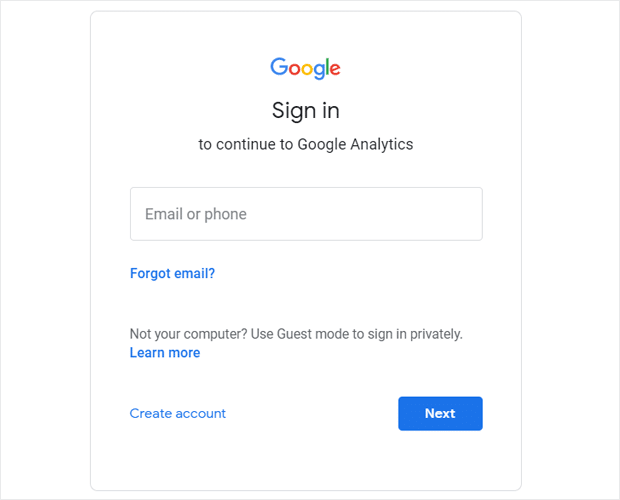
Step 2: Click on “Admin” in the bottom left corner.
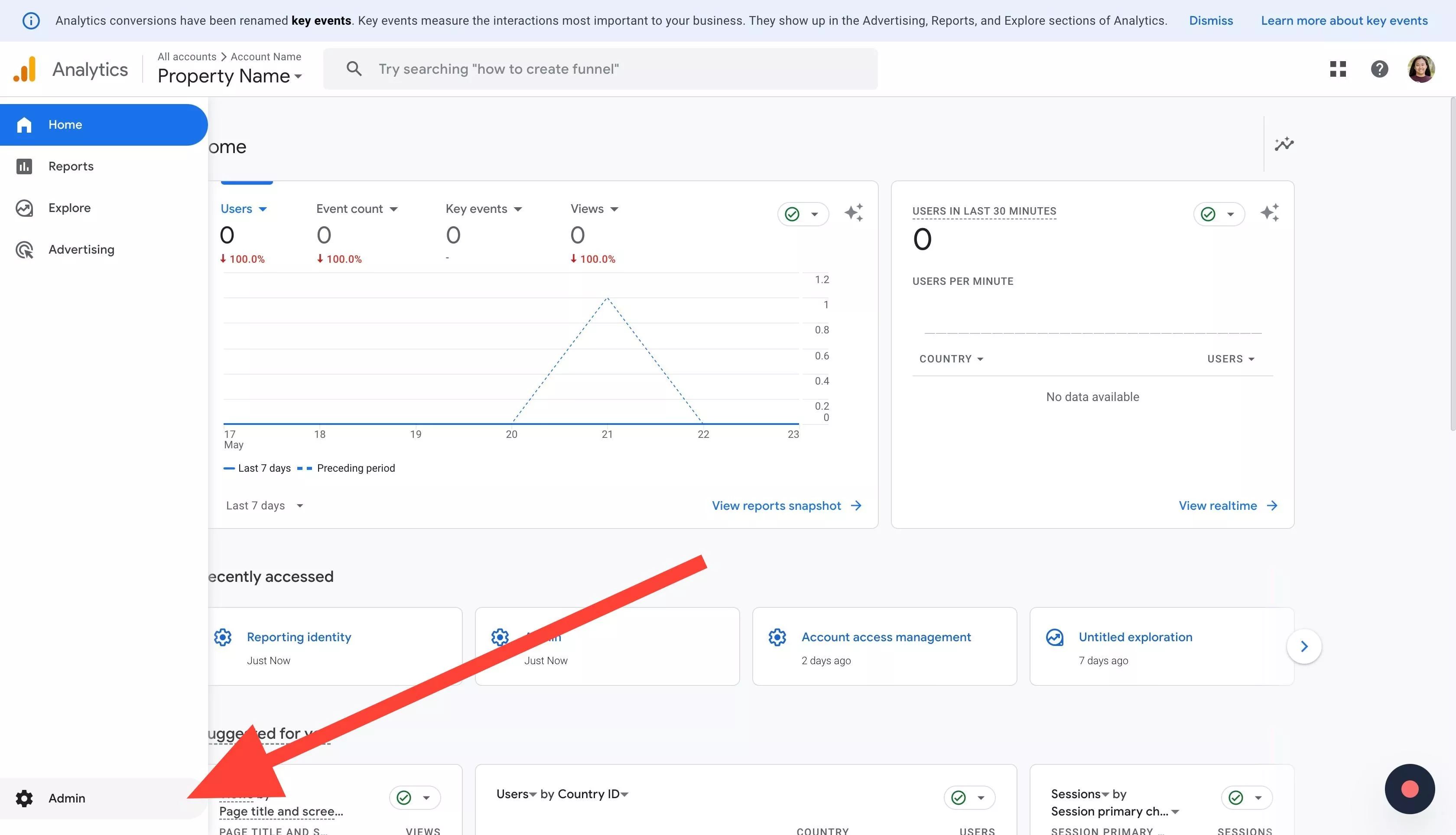
Step 3: Under “Data collection and modification,” click on Data Streams.
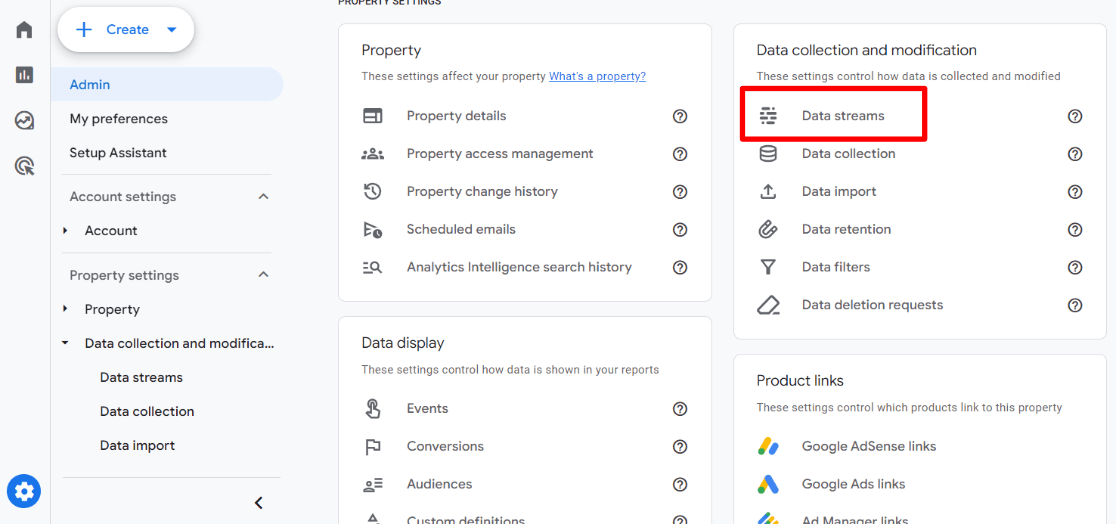
Step 4: Select your web stream.
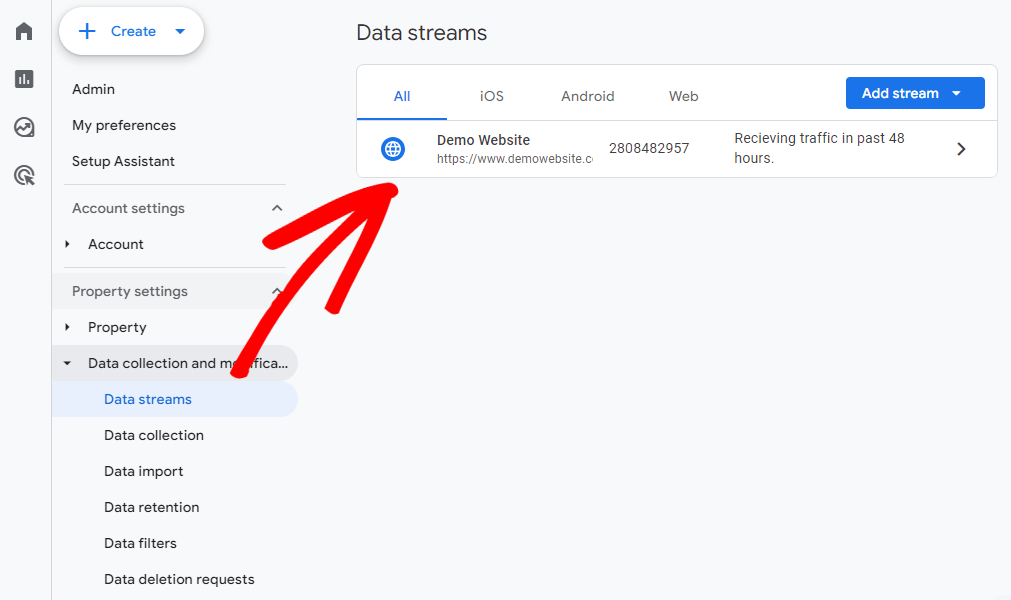
Step 5: Scroll down and click on Configure tag settings.
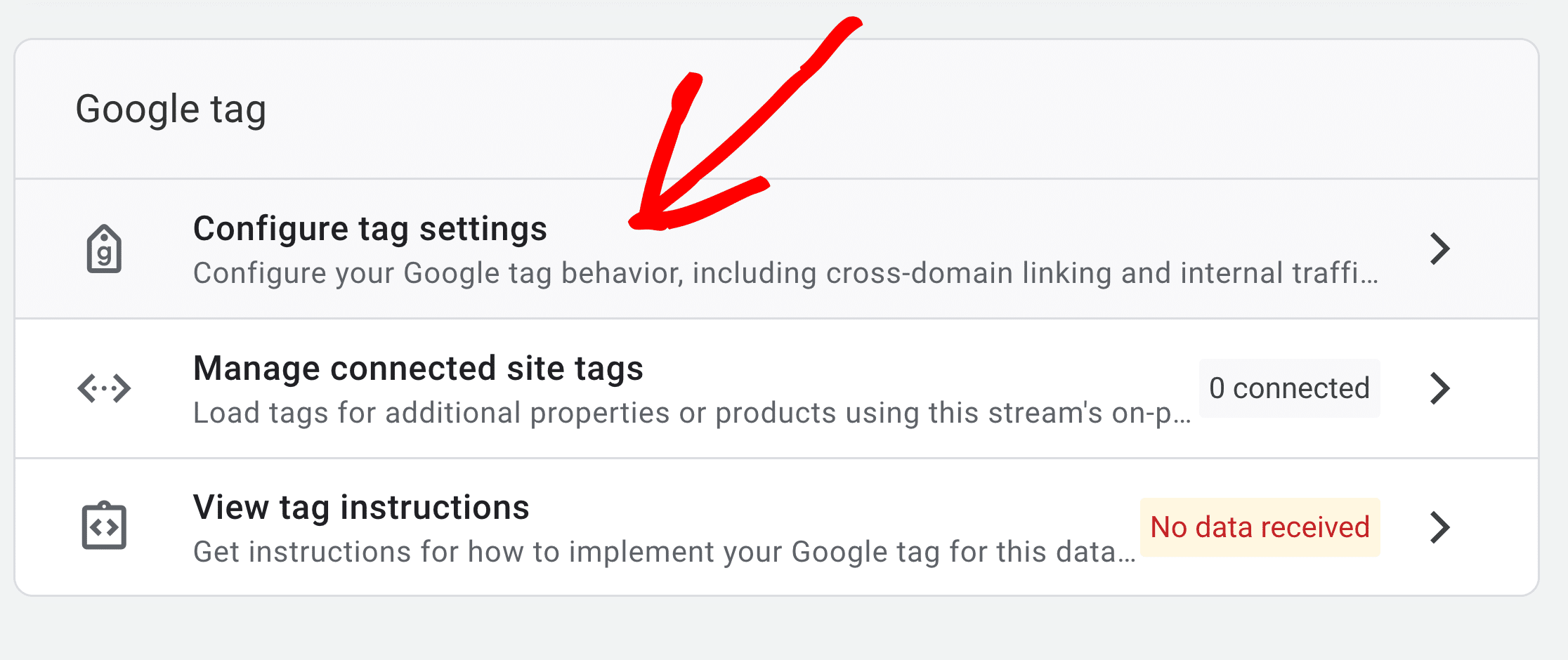
Your Measurement ID will be displayed both at the top and in the “Your Google tag” section. For installation instructions, to find your full Google tag code, and to easily copy your Measurement ID, click Installation instructions:
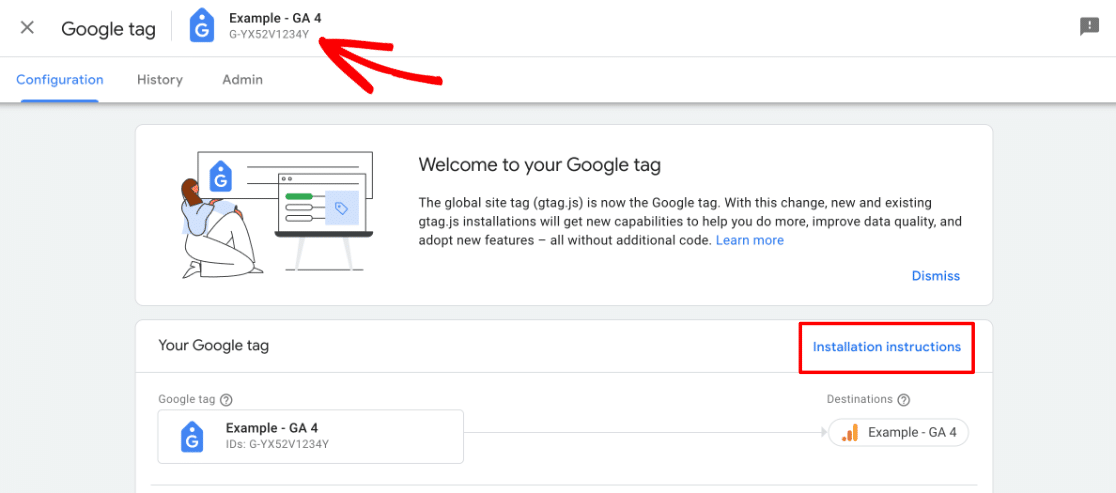
Pro tip: If you’re using WordPress with MonsterInsights, you don’t even need to go hunting for your tracking ID. MonsterInsights automatically connects your website to Google Analytics for you.
What is the Google Analytics Tracking ID Used For?
Now you know what your tracking ID (measurement ID) is and where to find it. Great! But what exactly is this code used for? Here’s the scoop.
Installing Google Tools
When you set up Google Analytics on your website, you’ll need to install your Google tag. The Google tag is a tracking code snippet that includes your measurement ID.
Here’s that screenshot again of the Google tag with a measurement ID in it:

Your Google tag isn’t only for Google Analytics! You can also set up Google Ads, Google Tag Manager, and Campaign Manager 360 using the same tag + measurement ID.
Connecting with Third-Party Tools
Some third-party marketing and analytics tools require your Google Analytics tracking ID to integrate with your account. This allows these tools to pull data from your Analytics account and provide additional insights.
Troubleshooting
If you’re having issues with your Google Analytics setup, your tracking ID can be a helpful reference point for diagnosing problems. You can use the Google Tag Assistant tool to see if you have multiple tracking codes installed, if your code is in the right place, and more.
How to Install Your Google Analytics Tracking ID
You have a few different options for installing the code snippet to get Google Analytics up and running on your site.
Let’s start with the basics. Here are the instructions for simply pasting the code into your site’s header:
- Copy your full Google tag: Once you’ve located your Google tag in your Google Analytics account, copy it to your clipboard.
- Add the Google tag to your website: You’ll need to paste the code snippet into every page of your website. The best way to achieve this is to put it in your header file.
- Verify installation: After adding the code, use the Google Analytics real-time reports or Google Tag Assistant to confirm that data is being collected correctly.
That’s the basic way. If you’re using WordPress, there are a couple of better ways to install your tracking code. Every time you update your site’s theme, the header file will be overwritten with a new version. That means that your tracking code will be removed every time.
Instead of adding the code back every time, we recommend using a plugin.
MonsterInsights is the best Google Analytics plugin for WordPress. The plugin makes it incredibly easy to install your tracking code without having to touch your site files at all, and brings your most important Google Analytics metrics right inside your WordPress dashboard.
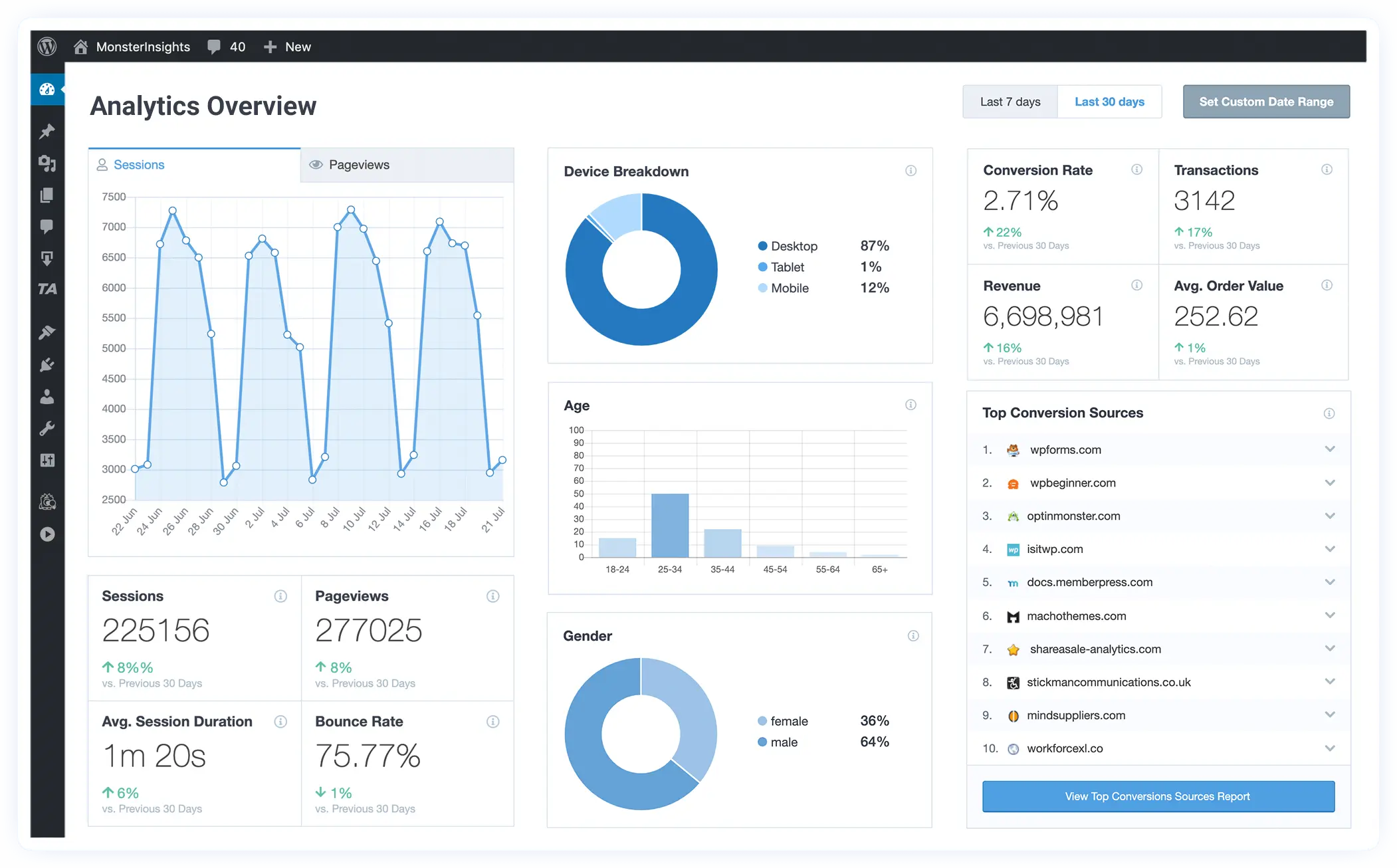
It can also set up tracking features with just a couple of clicks that aren’t included with Google Analytics, such as eCommerce tracking, form submission tracking, media tracking, and much more.
Plus, you never have to worry about your tracking code getting removed.
Get started with MonsterInsights now!
Common Issues with Google Analytics Tracking IDs
While using a plugin like MonsterInsights helps ensure that everything is set up correctly, there are a few things that can go wrong. Here are a few common issues to watch out for:
Using the Wrong ID
Make sure you’re using the correct measurement ID for the property you want to track. If you’ve created a couple of different properties and/or data streams, it can be easy to accidentally grab the wrong one. Take note of the name of the correct one, install that code, and open that property to find your data.
Using MonsterInsights? Simply select the correct property from the dropdown to connect it to your website.
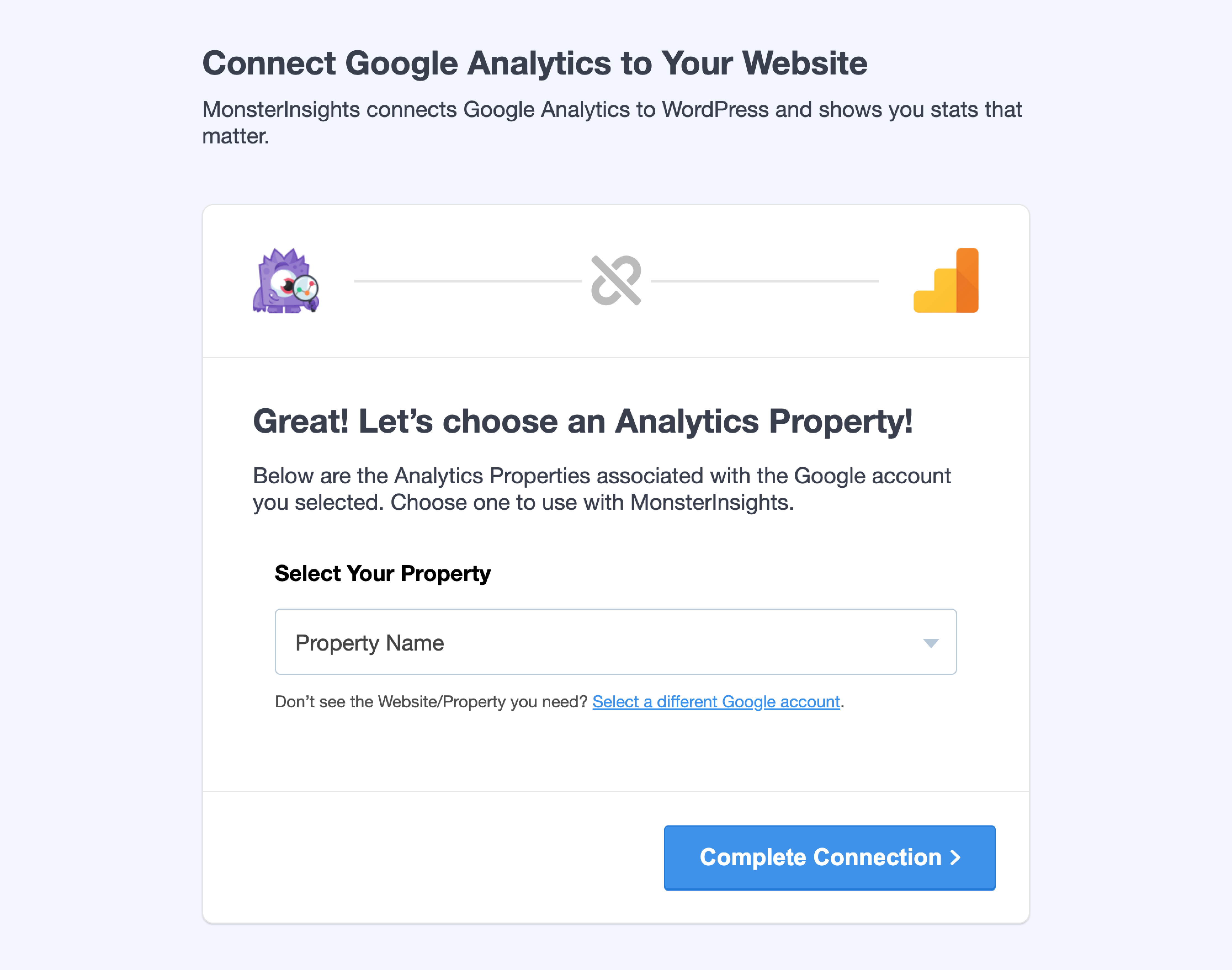
Incorrect Implementation
If your tracking code isn’t placed correctly in your website’s code, it might not work properly. Double-check that it’s in the header section of every page you want to track.
Keep in mind if you use landing pages, you might not be using the same header file. Remember to add your tracking code to all pages you want to be tracked!
Duplicate Tracking Codes
You’d be surprised how easy it is to end up with duplicate tracking codes. For example, if you install your own code but then decide to use MonsterInsights, you’d need to remove that code that you added yourself.
Another common mistake is installing the code yourself, then deciding to use Google Tag Manager and setting up Google Analytics tracking there. Without removing that code you added yourself, you’ll now have duplicate tracking tags.
Ad Blockers
Some users’ ad blockers might prevent your tracking code from running when they visit your site. While you can’t control this, it’s good to be aware of it when testing or analyzing your data.
For more common errors and solutions, check out Google Analytics Not Working: 13 Common Errors & How to Fix Them.
FAQ
Is the Google Analytics measurement ID the same as the tracking ID?
Yes. Google changed the term “tracking ID” to “measurement ID” when they released the newest version of Analytics, GA4. While the format of the ID changed slightly, it means essentially the same thing.
Can I use the same tracking ID on multiple websites?
While it’s technically possible, it’s not recommended. Using the same ID on multiple sites will combine all their data, making it difficult to analyze individual site performance.
How often should I check my tracking ID implementation?
Verify your tracking ID implementation at least once a quarter or after any major website changes.
What is a Google Analytics code snippet?
A Google Analytics code snippet is a bit of JavaScript tracking code embedded on a website to collect data about user interactions and send it to your Google Analytics property. The Measurement ID is located inside the snippet.
There you have it! Everything you need to know about Google Analytics measurement IDs.
Remember, proper tracking is the foundation of good analytics, so take the time to get it right. Happy analyzing!
If you’re not using MonsterInsights to track your WordPress website visits yet, get started today.
If you enjoyed this article, you might also want to check out:
How to Use Google Analytics and AI to Grow Faster 🚀
6 Essential Google Analytics Tips for Businesses & Marketers
Top 11 Important Google Analytics Metrics to Track
Finally, don’t forget to follow us on YouTube for more helpful reviews, tutorials, and Google Analytics tips.

